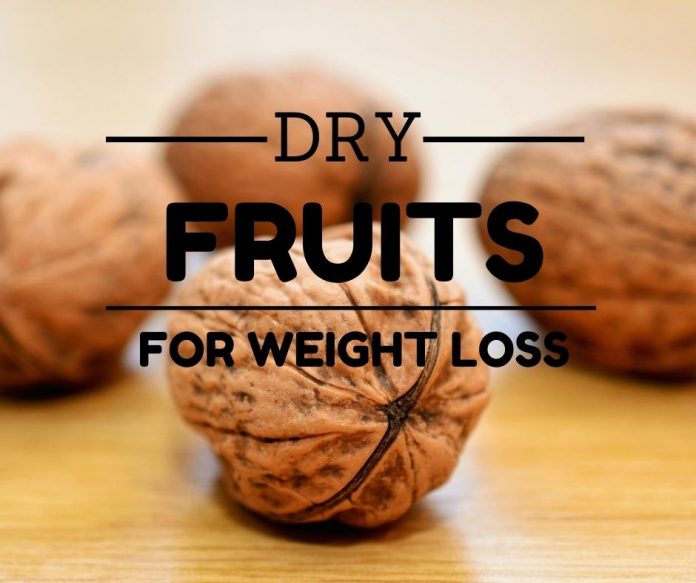I’ll be brutally honest here and lay it out for you that dry fruits FOR WEIGHT LOSS ONLY WORK If YOU’RE ON A DEFICIT. But if you understand how you can make the most use of them in your weight loss regime, you set yourself to reap their great benefits.
Let’s get a few basics out of the way first, to lose weight you need to be in a calorie deficit.
Now, how you achieve that depends on you viz; whether you reduce your calorie intake or decide to up your physical activity to increase your calorie expenditure.
Both ways work and if you combine them both, you get the best of both worlds.
Types of fats in fruits: A brief introduction.
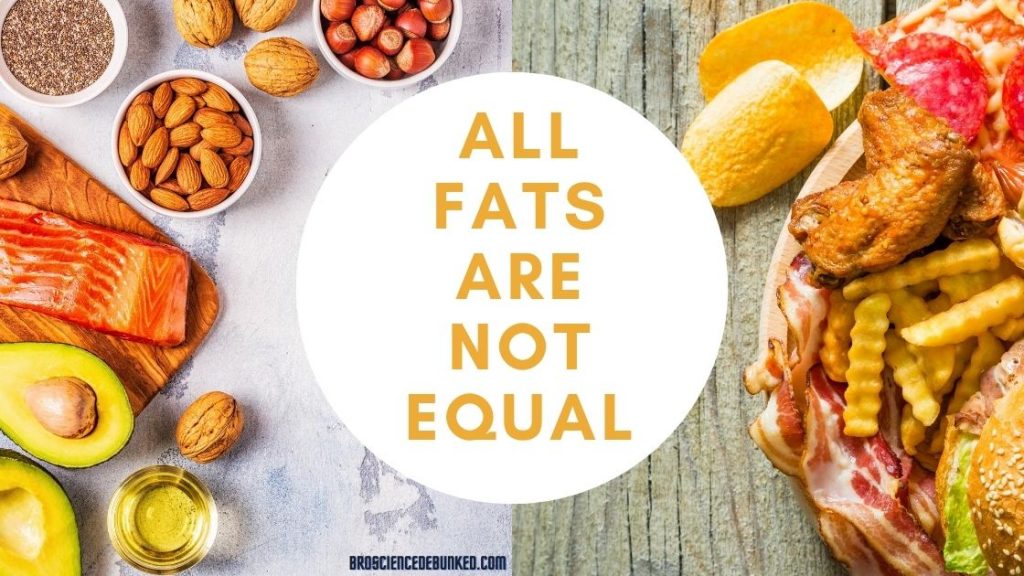
It’s also important to understand what type of fat is present in any food you eat and how it affects your bodily functions.
Fatty acids can be broadly categorized into saturated and unsaturated fats. Saturated fats have all single bonds & no carbon=carbon double bonds exist in their molecular structure. This means that they can be very closely packed, hence they are also solid at room temperature.
While unsaturated fats can be further divided into monounsaturated and polyunsaturated fats. Monounsaturated fats have 1 carbon=carbon double bond and polyunsaturated fats have more than 1 carbon=carbon double bond in their structure. This means they are comparatively loosely packed and are semi-solid or liquid at room temperature.
Generally speaking there is some evidence that suggests that unsaturated fats especially polyunsaturated fats are better when it comes to the overall health factors.
Polyunsaturated fats also include the famous Omega -3 fatty acids which you must have heard of before. Following are the Omega 3 fatty acids :
- ALA – alpha linolenic acid
- EPA – eicosapentaenoic acid
- DHA – docosahexaenoic acid
These three fatty acids are called essential fatty acids because our bodies cannot make them on their own and they must be consumed via food and beverage. Omega 3 fatty acids play a vital role in cardiovascular health, brain development in children, and bone health in the elderly.
ALA is plant-based and is typically found in nuts and seeds such as pine nuts, flax seeds, and walnuts. EPA & DHA are found in seafood, usually fatty fishes such as Tuna, Mackerel, and Salmon.
So that was about the type of fats, now let’s get down to the business and see which factors actually decide whether or not a dry fruit is a good choice if your goal is to shed those extra pounds.
How to make the most use of dry fruits in your weight loss journey?
As the name suggests, dry fruit is just the dried-out version of the same fruit. The process of dehydration could be anything viz; sun-dried, oven-dried, or dried using an actual dehydrator.
Dried fruit would lose some vitamin C & the antioxidants in the process but other than that everything else remains the same more or less. It has the same fiber and protein which are the most important macronutrients.
Dry fruits are usually low-calorie if you eat only a handful and treat them as what they are, snacks. Binge eating on dry fruits would skyrocket your calories so quickly that you’d be plus 10 pounds before you put them down. So when I say handful I mean exactly that. I’m assuming your hands are not too big, of course.
To give you some perspective, start by tracking your calories and making dry fruits a part of your diet.
Now, how much do you really eat? There is no straight answer but eat them in quantifiable amounts, such as if you’re having walnuts, then not more than 20 grams. For almonds, anything between 10-20 almonds is good. Same with pistachios and cashews.
How To Decide Which Dry Fruits For Weight Loss You Should Eat?
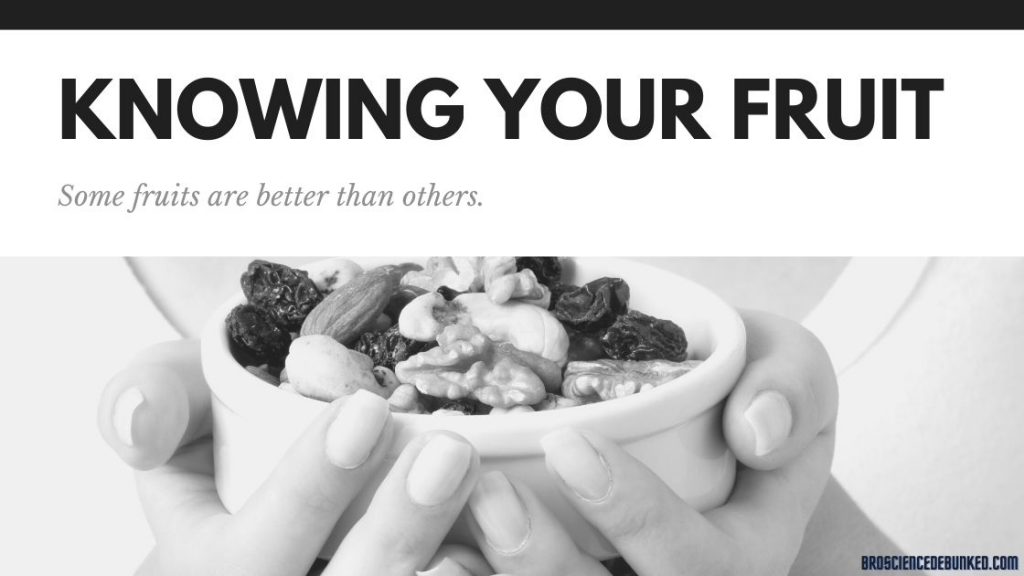
There are four factors that ultimately decide whether the dry fruit you’re including in your diet will assist you in your weight loss goal or not. They are :
Calorie Density Of The Dry Fruit.
The lesser calories the dried fruit contains the better it is. Ultimately it’s a dry fruit and one should eat it like that, binge eating dry fruits can help you put on a lot of weight instead.
Satiety level Of The Dry Fruit.
The higher the satiety of the dry fruit, the better it is. Satiation is simply the feeling of fullness one gets after consuming anything edible. If the dry fruit you’re eating keeps you full only for a short period of time, it’s counterproductive to your goal.
Overall Nutrition Profile of The Dry Fruit.
A highly nutritious dry fruit is one that has an ample amount of macro as well as micronutrients. But there are a few things which are more important than the other viz; sugar, fiber, protein, fats, B vitamins, calcium, and iron.
Glycemic Index Of Dry Fruits.
Last but not least when it comes to how consumption of a certain food affects the blood glucose levels, the metric which we use is the glycemic index. The lower the GI, the slower the food is digested and absorbed by the body. Hence least spike in insulin levels which controls the rate of fat burn.
All that said, these are the top 8 dry fruits for fat loss that tick the most boxes:
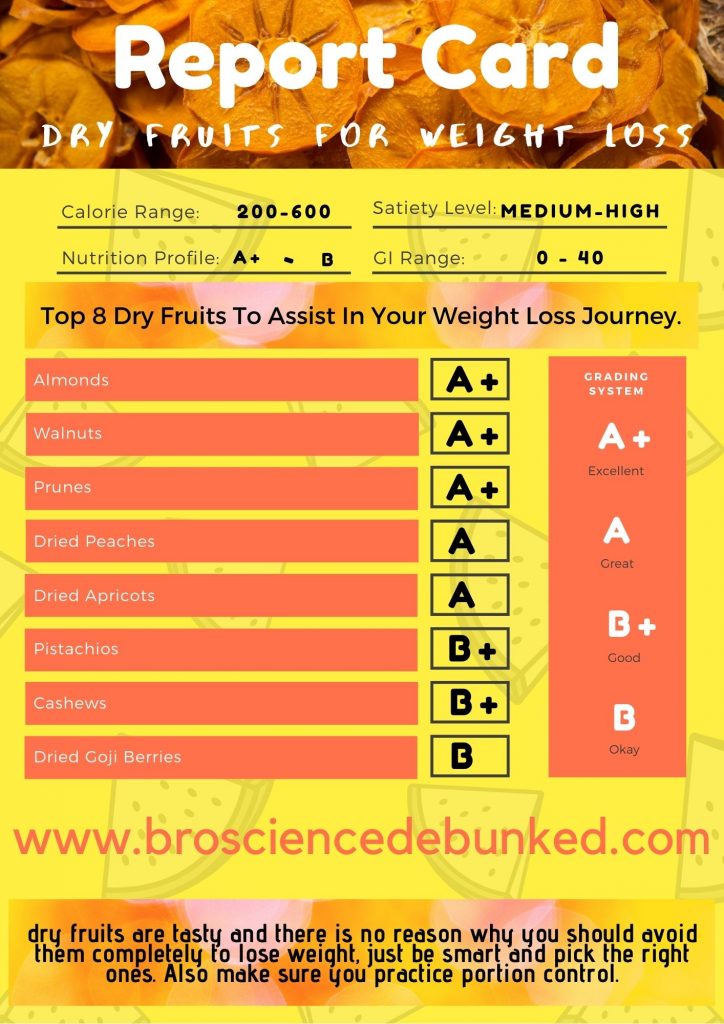
ALMONDS FOR WEIGHT LOSS
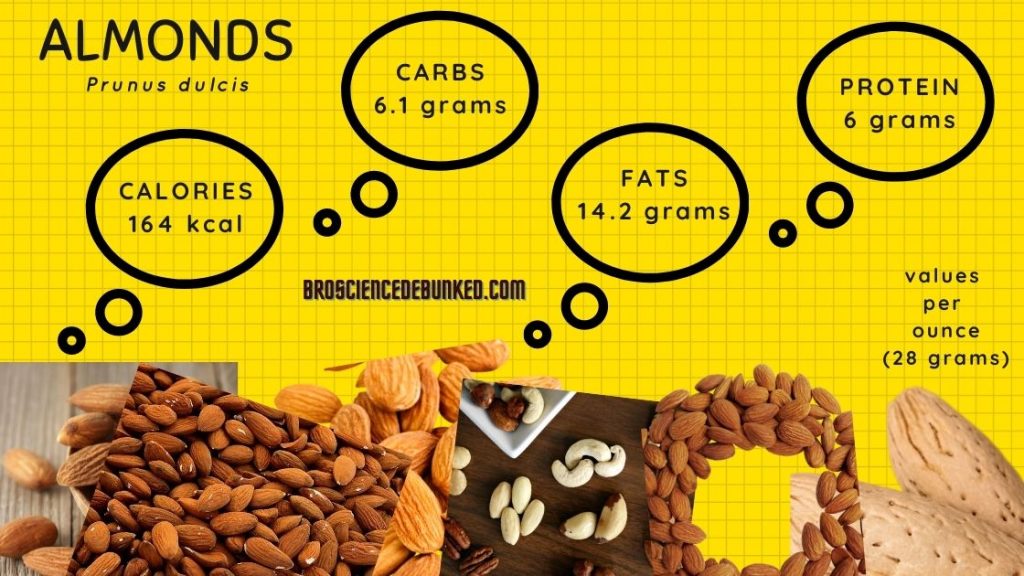
Is almond the first thing you picture when someone says dry fruit? There’s a good reason for it, or should I say reasons. If I wanted to talk about their benefits I’d have to write a separate article just about it. Without digressing any further I’ll tell you why they are at the top of this list.
Almonds are super high in unsaturated fats, almost 90% of their fat is unsaturated. Unsaturated fat does not spike your low-density lipoprotein (LDL) or as commonly called “bad” cholesterol.
Almonds are high in protein and they are very low in carbohydrates or sugar to be precise as most of the carbohydrates in almonds are fiber.
So to summarize, almonds are high in fat, high protein, and high fiber. And if your goal is weight loss, there isn’t a better macronutrient profile you can hope for.
This ensures that almonds rank highly in satiety factor which means it will keep you full for longer with consistent energy levels.
Consume 25-30 grams of almonds in the morning, which will provide you with 170 calories and you’re good for a few hours.
Enough about macros, almonds ace it when it comes to micro-nutrients as well. They are full of many micros but what stands out is it’s magnesium and vitamin E level.
An ounce of almond has 76 mg magnesium and 7.3 mg Vitamin E.
This is important because magnesium is linked with improving blood sugar levels by reducing insulin resistance in diabetic people. Vitamin E is important as it’s considered an anti-oxidant and they help the body rid of free radicals which in turn impact practically all functioning of the body ranging from improving blood pressure to bone health.
HOW MANY PER DAY: 15 to 20 almonds.
WALNUTS FOR WEIGHT LOSS
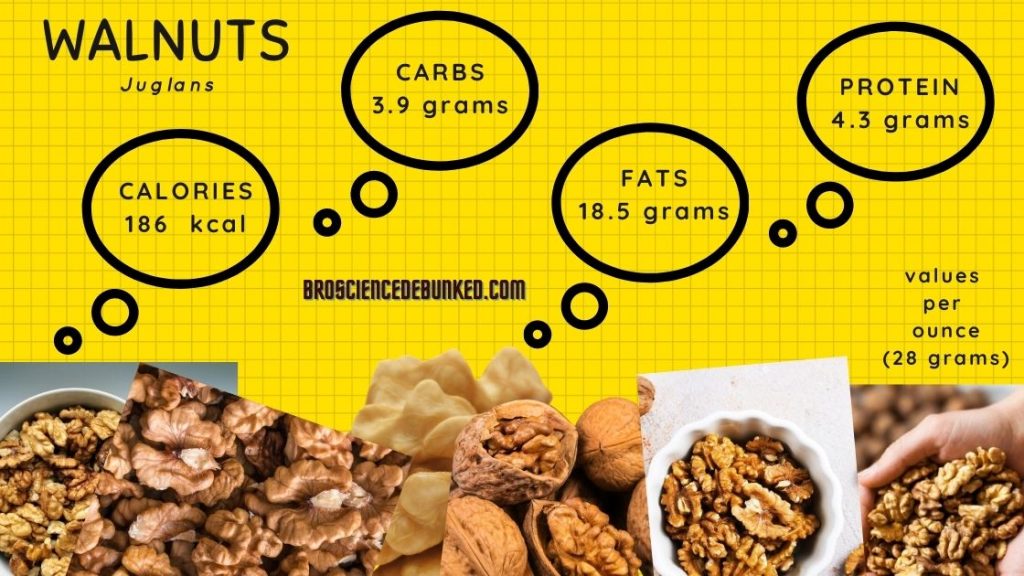
Second on the list are walnuts, my personal favorite. Most dry fruits are rich in monounsaturated fats which is not unhealthy by any means but polyunsaturated fatty acids are even better.
Walnuts are better than other dry fruits as they are rich in Omega 3 fatty acids, precisely Alpha-Linolenic Acid (ALA). ALA is a precursor of EPA and DHA. You should definitely consider consuming more ALA if you are a vegetarian and do not eat fish.
Omega 3 fatty acids help reduce the blood fat viz; triglycerides which can cause arteriosclerosis. Arteriosclerosis or atherosclerosis is a condition where your blood vessels become clogged due to the deposits of cholesterol plaque and blood flow being restricted which can cause heart diseases and ultimately death if not controlled in due time.
Along with the healthy fats, walnuts are also high in protein and fiber which makes them an ideal snack to save yourself from hunger pangs if you’re on a calorie-restricted diet.
Vitamin A along with anti-oxidants, Vitamin D, Vitamin B6, manganese, and copper is also present in a good amount in walnuts.
HOW MANY PER DAY: 5 to 7 walnuts.
PRUNES FOR WEIGHT LOSS
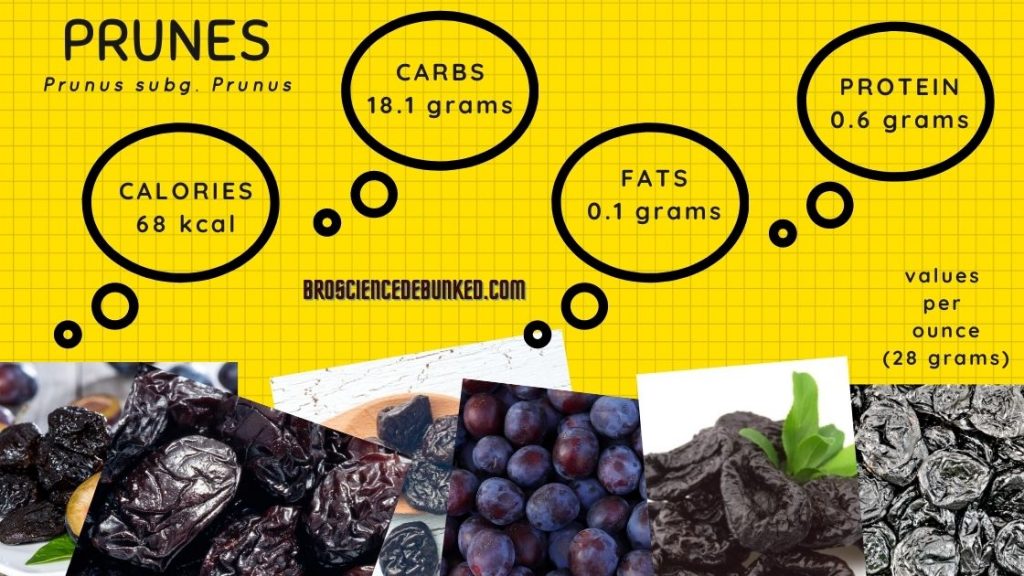
Prunes or as most people in the US prefer to call them dried plums, make it to the third spot because of its very special properties.
Dried plums aren’t exactly known for their weight loss properties and most people won’t even recommend them if your goal is to shed fat. And rightly so, prunes are high in sugar and they can easily add too many unwanted calories to your diet.
But there’s a catch. Prunes have 2 benefits that outweigh their high-calorie drawbacks and they are:
- Prunes are high in sorbitol
- Prunes can be used as your sugar replacement
They contain 15 grams of sorbitol per 100 gm which is a very high amount to occur naturally in any fruit. Sorbitol is a type of sugar that is one-third in calories and around 60% as sweet as sugar. But its actual benefit lies in its properties.
Sorbitol is a laxative compound and it helps with gut function. It helps rid constipation and aids in bowel movement. Combine this with the high fiber content of plum which makes it slow-digesting as well. A win-win if you have a sweet tooth.
Dried plums are naturally very sweet, so instead of avoiding them, what you should do instead, is use them to your advantage and use them as a sugar alternative. They can be ground and used as toppings or mixed in oatmeal or juices or shakes.
HOW MANY PER DAY: 5 to 10 prunes.
DRIED PEACH FOR WEIGHT LOSS
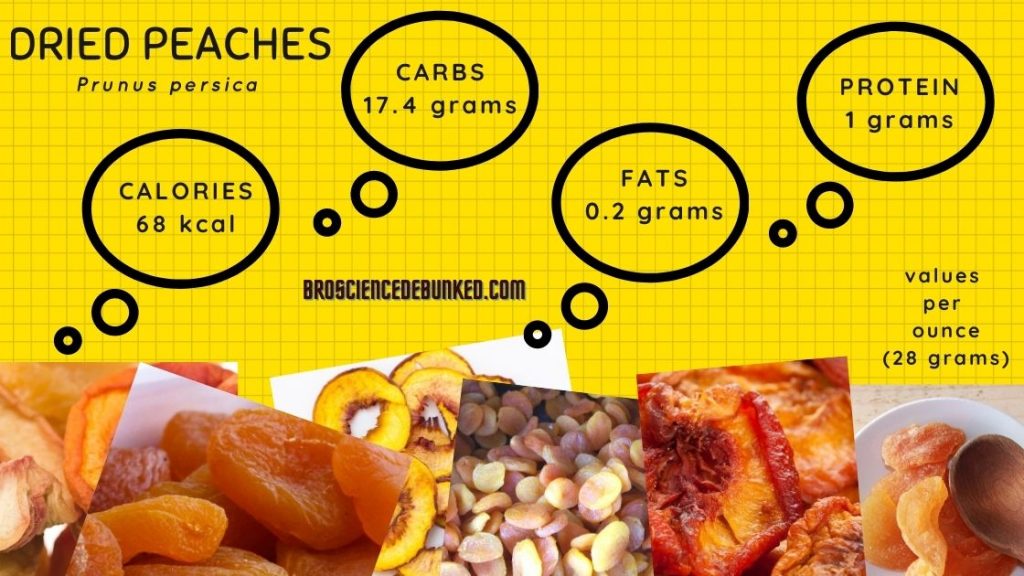
Peaches are native to southeast Asia and have been long known for their weight loss benefits. Although the reason why peaches are recommended for weight loss is that they are extremely high in water which also makes them extremely low in calories.
But here we are talking about the dried peaches so they are obviously not as low in calories as the ripe ones but nevertheless, it’s still significantly low. 100 grams of dried peaches release about 239 calories worth of energy. You might be wondering what’s so special about dried peaches then anyways?
Dried peaches are high in some of the naturally occurring flavonoids or compounds that have clinically proven anti-obesity properties:
- Catechins
- Anthocyanins
- Quercetins
- Chlorogenic acids
These compounds have anti-oxidative properties that not only aid in suppressing fat storage but also reduce inflammation, improve heart health, inhibit cancer cell proliferation, lower the risk of diabetes, and improve metabolism.
HOW MANY PER DAY: 3 to 4 dry peaches.
DRIED APRICOT NUTS FOR WEIGHT LOSS
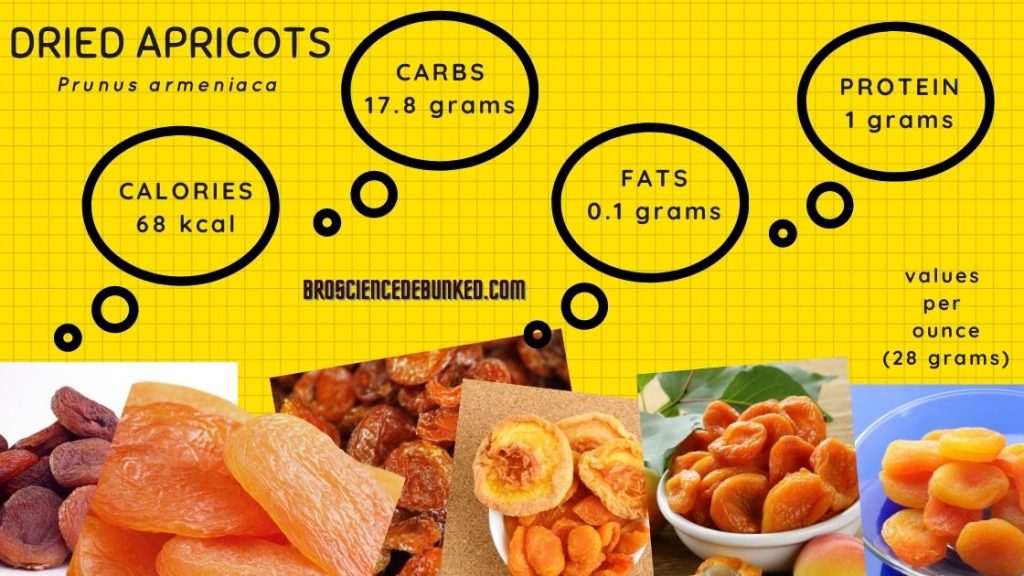
Apricots are yum, dried apricots even more. 100 grams of dried apricots have 240 calories of which the majority comes from carbohydrates but at the same time, they are also high in fiber.
I’ve included them in this list solely because they are so tasty and sometimes people tend to stick longer to a diet when they don’t feel restricted and bound. Think of apricots as your reward and sneak a few when you feel like it.
Dried apricots are also high in vitamin A, vitamin E(more on this), copper, iron, and potassium.
Dried apricots have a good amount of beta carotene which is the precursor of retinol, also known as vitamin A. This helps keep cellular health in check and everyone knows vitamin A is the most critical element for healthy vision.
What makes Dried apricots better than many other dry fruits is their rich Vitamin E profile viz; Anti-oxidants help the body keep free radicals in check and prevent cellular damage, in some cases even help reverse it. Following are the compounds with anti-oxidative properties found in dried apricots:
- Catechins- prevent cell damage.
- Caffeic acid- reduces exercise-induced fatigue.
- Quercetin- anti-inflammatory
- Epicatechins- stimulate MPS, and improve blood flow.
- Gallic acid- Ayurvedic herb
- Hydroxycinnamics-Anti-inflammatory & anti-microbial.
- Coumaric acid- Anti-inflammatory & anti-microbial.
- Proanthocyanidins- prevents nitrosamines formation i.e anti-cancer properties.
- Ferulic acid- Anti-oxidants for anti-oxidants i.e helps enhance the effect of all other anti-oxidants.
These anti-oxidants are found in very small quantities in apricots, however as they say something is better than nothing. This definitely does not mean that to get more of these anti-oxidants you binge on dried apricots.
HOW MANY PER DAY: 3 to 4 dry apricots.
PISTACHIO NUTS FOR WEIGHT LOSS
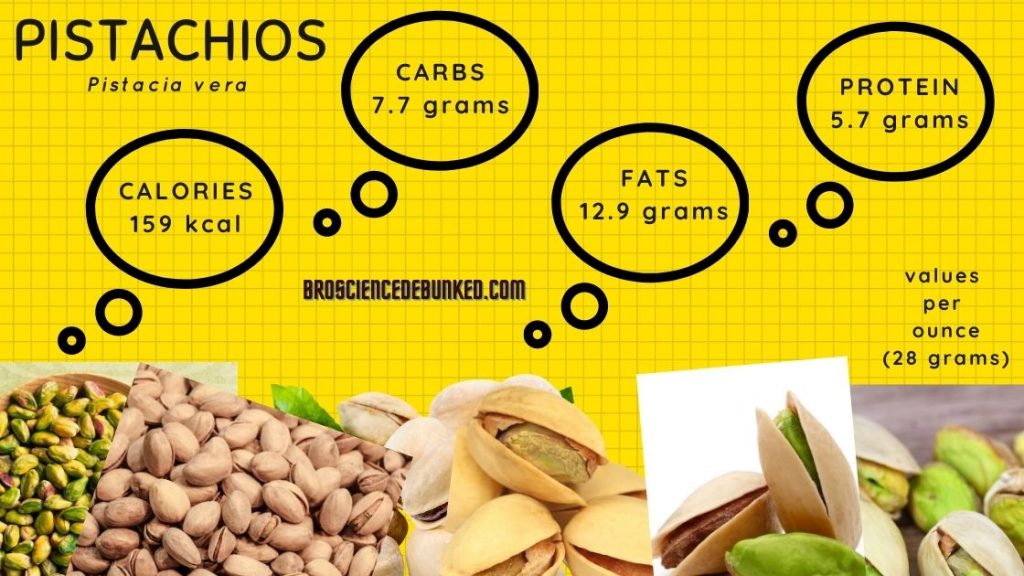
Pistachios are great, and I say that because of the following reasons:
- High in protein and fiber- Perfect combination for satiety. Slow digestion of these nuts makes sure you’re full for longer.
- Comes with shell- Now this might seem a bit illogical to state as a benefit but here me out. The shells actually make you put some effort before you could actually eat the nuts. This has 2 benefits:
- Mindful eating- you exactly know how many you have eaten as you can see the leftover shells. And it actually takes time to shell them which makes sure your less likely to eat more.
- Evidence- There are studies that suggest that when people have to shell the nuts before eating them, people consume over 40% lesser nuts.
- About 90% of the fat in pistachios comes from healthy monounsaturated fats which means they do not hike your LDL levels and cholesterol if eaten in moderation.
- High in anti-oxidants like most nuts, also contain high amounts of Vitamin B6 which is good for blood sugar regulation. Besides these pistachios also have good amounts of manganese, thiamine, copper phosphorous, and potassium.
HOW MANY PER DAY: 30 to 35 pistachios.
CASHEW NUTS FOR WEIGHT LOSS
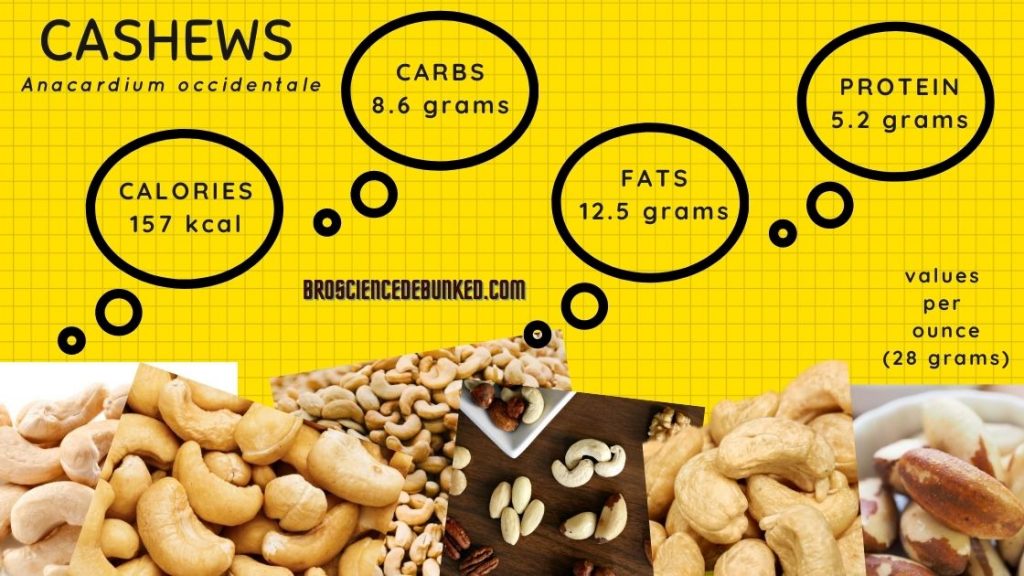
Cashews are not the first choice when it comes to low-calorie snacking. Cashews are high in everything viz; high in fats, high in protein, and high in carbohydrates as well.
But this should not be the limiting factor, the trick with cashew nuts is to have them in moderation as they can pile on the calories very easily.
That being said, they are very healthy given they have a good amount of monounsaturated fat and some polyunsaturated fat as well which includes omega fats as well.
These calorie-filled nuts have one advantage over all other nuts, they are incredibly filling. It’s the question of how you see it, whether the glass is half full or half empty depends on you.
Cashews can be great because they can keep you full and quench your hunger for a few good hours if you eat a handful of these. If you decide to have cashews in your diet, make sure you’re not having too many.
Raw cashews have the least amount of calories compared with roasted cashews or cashew butter as they tend to have higher fat, higher carbohydrates, and lesser protein.
If I talk about micro-nutrients they maintain their track record and per ounce (28grams) serving contains:
- manganese- 20% DV
- iron- 11% of DV
- copper- 69% DV
- zinc- 15% DV
- phosphorous- 13% DV
- selenium- 10% DV
- B vitamins- 10% DV
- vitamin K- 8% DV
- magnesium- 20% DV
HOW MANY PER DAY: 10 to 15 cashew nuts.
DRIED GOJI BERRIES FOR WEIGHT LOSS
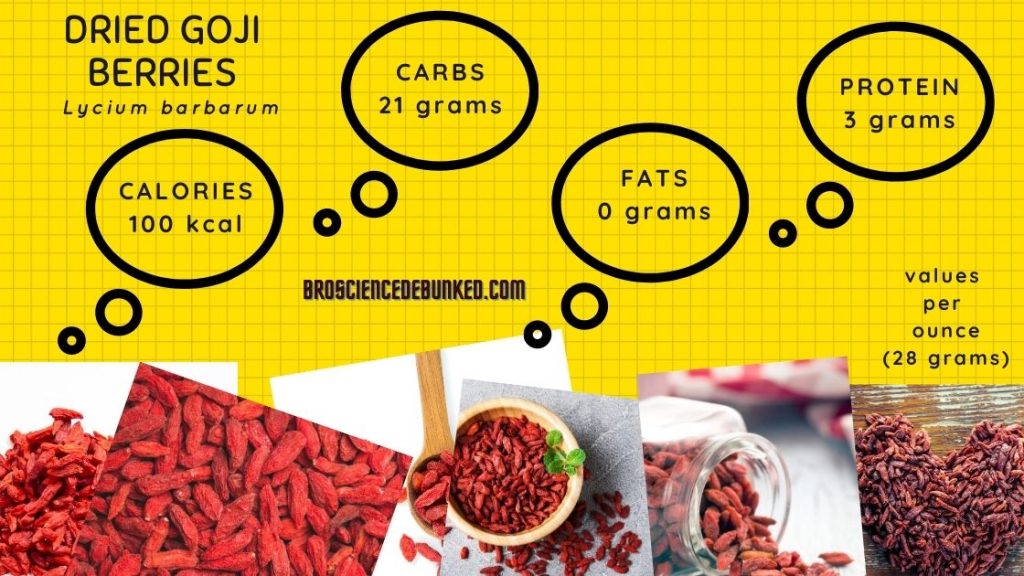
You were not probably expecting it, were you?
Goji berries are marketed as a super food, nothing against that, but they have always been marred with side effects for some people on some specific medications which prevents me from going on and recommending it whole-heartedly.
Dried goji berries are also quite expensive if compared with other berries which might again prove to be a deciding factor for many. Also, their non-availability in many places is something one should keep in mind.
All that said, goji berries have a solid nutrition profile. It’s one of the rarest fruit to have all 8 essential amino acids.
Goji berries are also very high in fiber, almost 50% of daily value can be covered from one ounce serving of these sweet berries.
Here’s the best part about these dried berries, they are rich in iron along with vitamin C. What this means is that the iron from goji berries is more bioavailable and can be absorbed to its maximum potential.
Non-heme iron sources have usually poor bio-availability as they need vitamin C sources to be consumed along with them for better absorption. Goji berries got this covered.
As these berries are sweet, you can even replace these with other sugary stuff you use in your diet without compromising on your sweet tooth.
The only thing you should keep in mind while including dried goji berries in your diet is to make sure you are not on any kind of diabetes medication as they have the reputation of affecting your blood sugar levels.
HOW MANY PER DAY: Half ounce(14 grams) dried goji berries.
FINAL WORDS
To conclude, this was my research-backed list of the best dry fruits and nuts you can include in your diet if your goal is weight loss. But it is important that I reiterate that weight loss has more to do with math than science. Calorie in < Calorie out and you'll shed those kilos. These dry fruits can be a part of your diet but they will only help when you're on a calorie deficit. These tasty dry fruits should help you lose weight as they make your diet more sustainable while keeping your sanity intact.

